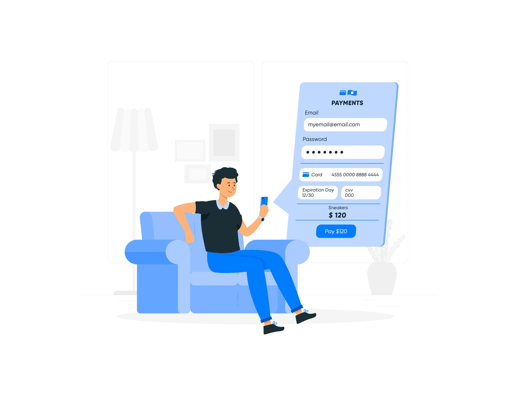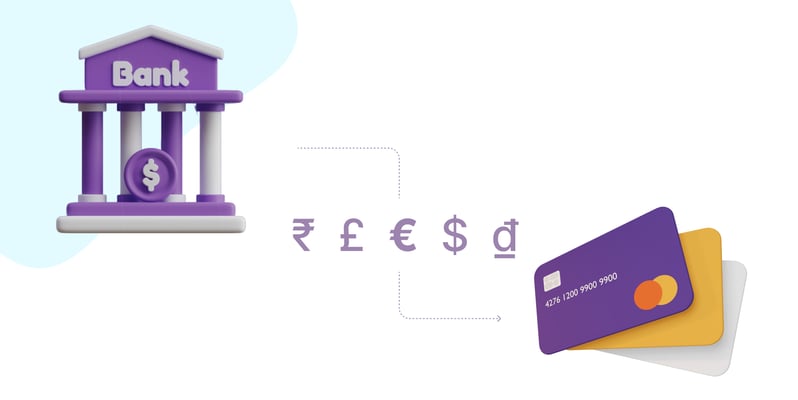Pre-authorization is an effective way of saving MDR (Merchant Discount Rate) fees and reducing chargebacks. Didn't know that? Well, we got you covered.
In this blog, we'll dive deeper into what pre-authorization is in payments, how it works, what industries actively use pre-auth, and how it can help you save MDRs and chargebacks. So, read in full.
What is Pre-Authorization in Payments?
A pre-authorization, commonly referred to as pre-auth, is a necessary term essential to payments. It’s a restricted, temporary hold on a customer’s credit card spanning over five days. In most cases, it lasts for five days; however, in some cases, it might be valid till the post-authorization confirmation is received.
In most cases, the Merchant Classification Code determines the holding period, but you should be wary of extending the hold for too many days, as it can impact the pending payments.
Putting a hold on the customer’s credit account restricts and holds the customer’s available funds. As a payment-collecting merchant, you must arrange a post-authorization confirmation as soon as possible, specifically within your holding period, to honor the payment.
A failure to secure the post-authorization will mean that the issuing bank will release the restricted funds into the customer’s account, nullifying and voiding the entire transaction. Such expired holds are known as "falling off" transactions.
How Does Pre-Auth Work?
%20(1).png?width=2500&height=2742&name=Common%20Types%20of%20Platforms%20and%20Marketplaces%20(3)%20(1).png)
Here's how pre-authorization typically works:
-
Customer initiates the Transaction: When a customer makes a purchase, they enter their payment information on the merchant's website (credit card info, in this case), which initiates the transaction.
-
Merchant Requests for Pre-Auth: After the merchant receives the payment information, they send a pre-auth request to their PSP, if they support it, to authorize the transaction.
-
The Processor does the Verification: The PSP or gateway checks if the customer's account has sufficient funds or meets other criteria to complete the transaction.
-
Processor Holds the Funds: If the processor finds everything in place, they approve the pre-auth request and reserve a specified transaction amount from the customer. This fund is made unavailable for the customers to use but is still not credited to the merchant.
-
Merchant Completes the Transaction: Once the funds are held, the merchant can complete the transaction by sending a "capture" request.
-
Settlement of Funds: Once the merchant completes the transaction, the payment processor releases the funds to the merchant's account. The settlement of funds can be instant or can take a few days, depending on the payment processor.
Now that you know what pre-auth is, you must be wondering why the funds are held in the first place. After all, this process only increases the time before a merchant can access funds. While that's a common perception, there's more to it.
Let's learn why pre-auth is used and by what businesses.
What's the Purpose of Pre-Auth, and What Industries Use it (Use Cases)
%20(1)%20(1).png?width=2500&height=2623&name=Whats%20the%20Purpose%20of%20Pre-Auth%2c%20and%20What%20Industries%20Use%20it%20(Use%20Cases)%20(1)%20(1).png)
The primary purpose of performing a pre-auth is to verify if the payment method is valid for the transaction. Several factors, such as ensuring sufficient funds to facilitate the transaction, are considered to validate this. And if everything is right, the funds required for the transaction are held.
The payment hold can sound irrelevant for a brick-and-mortar store that hands over the item as soon as the customer makes the purchase. However, this hold makes a lot of sense for certain businesses, both offline and online, where the merchants are at risk of losing money.
Confused? Here are some industries that actively practice pre-auth and for good:
1) Hotels: Pre-auth is pretty useful for hotel owners. It's because, during the check-in, they don't know what will be the final charge before the customer checks out. By using pre-auth, they can block a higher sum on a customer's credit card and ensure they're capable of paying it.
Once the checkout happens, if there are some damages, the hotel management can easily cover those charges without a hassle. If not, an amount less than the reserved amount is captured.
2) Healthcare Businesses: Another industry that uses pre-auth is healthcare. Service providers like hospitals, doctors, and clinics place a hold when a patient is admitted. The amount is held until the services are provided. This helps the hotel staff ensure they're paid in full for the services availed.
3) Car Rental: Car rental businesses are unsure if they'll get the vehicle delivered back to them in the same condition; as they handed it to the consumer. They use pre-auth and block a higher amount to protect themselves and cover any additional damage.
If there are no damages, an amount lesser than the amount held is settled when the vehicle is returned.
4) eCommerce Businesses: eCommerce businesses often place a hold on funds when the customer places an order without actually charging them. The charge is made only when the order is shipped. This helps merchants ensure they'll get paid and also protects them from being charged cancellation or refund fees, which is common in eCommerce (as customers often end up canceling their orders).
5) Subscription Businesses: Subscription businesses also use pre-auth to ensure they get recurring monthly, weekly, or yearly payments from customers. When a customer signs up and enters the card details, certain funds are held, giving the merchant a sense of security that they'll be paid for their services.
How Can Merchants Reduce Chargebacks through Pre-Auth?
Here's how:
Typically, there are two reasons why a customer might file a chargeback:
- They're trying to defraud the merchant.
- They are genuinely victims of fraud.
Whatever the case, if the customer raises a dispute, the merchant has no option but to fight it and pay a chargeback fee in most cases. For instance, Stripe (a popular payment gateway) has stopped refunding chargeback fees to merchants, even if they win a dispute. And this can be financially tough.
The merchant loses money in the above scenario because they didn't use pre-auth. If you use pre-auth and hold the transaction amount, the customer cannot file any chargeback. It's because the money was never actually used. If they try to file a dispute, the bank will simply ask you to remove the hold and release the fund. This way, you won't have to pay any chargeback fee and avoid unnecessary hassle.
How Can You Save the Merchant Discount Rate (MDR) and Transaction Fee Through Pre-Auth?
In addition to helping merchants prevent chargebacks, pre-auth can also help you save MDR and transaction fees. Here's how:
MDR stands for merchant discount rate, a percentage fee the payment processor charges for facilitating debit and credit card transactions. This cost is usually passed down to the customer as a part of the transaction cost.
Let's say a merchant use pre-auth for validating the transaction. If the transaction is validated, the merchant must pay an MDR. However, there'll be no MDR if the transaction is declined or the authorization holds expiries. It simply means by using pre-auth, merchants won't have to pay MDR for failed transactions. And this will save transaction fees as well.
There's another fee that merchants have to bear: interchange fee, which adds to the overall transaction charges. However, using pre-auth, you need not pay an interchange fee until the authorization is validated and the customer's account is debited. If the transaction is canceled while the payment is on hold, you won't have to bear an interchange fee, which will help you reduce the overall transaction fee and thus save money.
Downsides of Using Pre-auth?
While pre-auth assures merchants that they'll be paid and also helps reduce the instances of chargebacks, it should be used wisely. Because sometimes, pre-auth can lead to more chargebacks.
Here's an example:
Suppose you place a pre-auth request and don't settle the transaction within the given time. In that case, the hold will expire, and the amount will be credited back to the customer. Customers are usually unaware of the time period of the authorization hold, so they might think they've been charged twice. And this can lead to customers filing chargebacks.
In addition, if the captured amount is higher than what was initially held, the customers might think they've been defrauded. And this, again, can lead to higher chargebacks. So, merchants should be careful while using pre-auth. One thing merchants can do is to communicate everything clearly to avoid any confusion.
Wrapping Up
Embrace the power of pre-authorization and unlock a world of benefits for your business - particularly if you're in the hospitality, rental, or e-commerce space. By using pre-auth, you can rest easy knowing you'll be paid and avoid pesky transaction costs and chargebacks.
So, if you belong to any of these or similar industries, make sure to enable pre-auth for all transactions. However, always remember to use pre-auth carefully and communicate the necessary details to your customers to avoid any confusion. %20(1).png?width=4068&height=1080&name=CTA%20(10)%20(1).png)
.png?width=123&height=71&name=inai%20logo%20-%20dark%201(1).png)
%20(1).png)


.png?width=50&name=karthik%20(1).png)
.png?height=400&name=Header%20-%20What%20Are%20the%20Different%20Challenges%20and%20Issues%20With%20Cross-Border%20Payment_%20(1).png)

